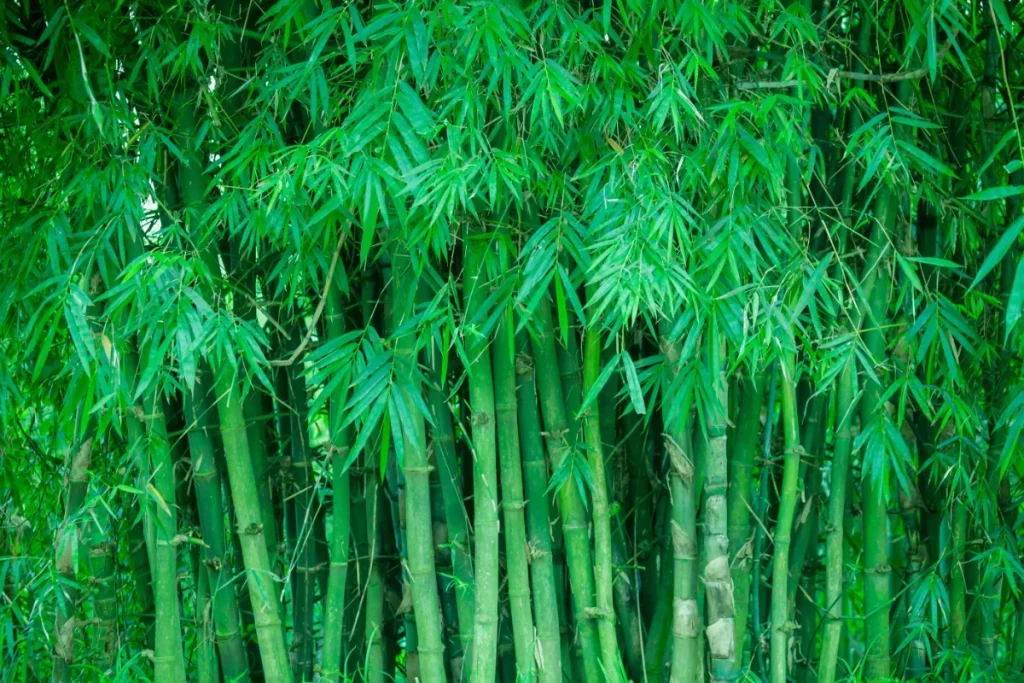
Non-invasive Bamboo
Introduction:
In the world of landscaping, bamboo stands as a symbol of grace and versatility, offering a unique blend of aesthetic charm and functional appeal. However, not all bamboo is created equal, and the distinction between invasive and non-invasive varieties plays a pivotal role in shaping a sustainable outdoor haven. In this exploration, we delve into the realm of non-invasive bamboo— a green wonder that not only captivates with its beauty but also contributes to responsible and harmonious landscaping practices.
Main Characteristics:
Here are some of the main characteristics of the non-invasive bamboo;
Growth Patterns
When considering bamboo for your landscape, understanding its growth pattern is crucial. Non-invasive bamboo comes in two main types: clumping and running. Clumping bamboo tends to stay in a tight, contained form, making it an ideal choice for smaller spaces. On the other hand, running bamboo has a more expansive growth pattern, potentially spreading over larger areas if not properly managed.
Height and Size
Non-invasive bamboo varieties come in various heights and sizes, catering to different aesthetic preferences and space constraints. From towering giants to compact options suitable for containers, there’s a non-invasive bamboo species for every landscape.
Root Systems
Unlike their invasive counterparts, non-invasive bamboo species have well-behaved root systems. Clumping bamboo tends to form dense, self-contained clumps while running bamboo can be controlled with proper root barriers. Understanding the root system is key to preventing bamboo from encroaching on unintended areas.
Reproductive Traits
One characteristic that sets them apart is their reproductive behavior. Non-invasive varieties are less aggressive in their spread, producing fewer runners and seeds. This makes them more predictable and easier to manage in a controlled garden environment.
Benefits of Non-Invasive Bamboo:
Environmental Harmony
Non-invasive bamboo contributes to environmental harmony by promoting biodiversity and providing habitat for various species. Its controlled growth prevents the displacement of native plants and fosters a balanced ecosystem within your landscape.
Landscape Versatility
The versatility of non-invasive bamboo extends to its suitability for various landscaping purposes. Whether you’re looking to create a serene bamboo grove, a privacy screen, or an ornamental focal point, non-invasive bamboo offers a range of options to suit your design goals.
Minimal Maintenance
One of the key advantages of non-invasive bamboo is its low-maintenance nature. With proper care, these bamboo varieties require minimal attention, making them an excellent choice for those seeking a beautiful, sustainable landscape without the need for constant upkeep.
Popular Varieties:
Golden Goddess Bamboo
Golden Goddess Bamboo (Bambusa multiplex ‘Golden Goddess’) is a compact clumping bamboo known for its golden stems and dense foliage. It’s an excellent choice for creating natural borders or decorative containers.
Alphonse Karr Bamboo
Alphonse Karr Bamboo (Bambusa multiplex ‘Alphonse Karr’) is prized for its striking yellow culms with green stripes. This clumping bamboo adds a touch of elegance to any landscape and is often used for ornamental purposes.
Umbrella Bamboo
Umbrella Bamboo (Fargesia spp.) is a non-invasive clumping bamboo that gets its name from its gracefully arching culms. This shade-tolerant bamboo is perfect for creating a lush, green screen in your garden.
Fargesia Varieties
Various Fargesia species, such as Fargesia robusta and Fargesia nitida, are popular choices for non-invasive bamboo. These clumping bamboos offer a range of heights and appearances, allowing you to find the perfect fit for your landscape.
Cultivation and Planting Tips:

Suitable Varieties
Choosing the right non-invasive bamboo variety depends on your specific landscaping goals. Consider factors such as available space, desired height, and the overall aesthetic you wish to achieve. Consulting with local experts or nurseries can help you make informed decisions based on your region’s climate and soil conditions.
Spacing and Planting
To maximize the benefits, proper spacing and planting are essential. Follow the recommended spacing guidelines for your chosen bamboo variety to ensure healthy growth and prevent overcrowding. Planting in well-draining soil enriched with organic matter promotes optimal development.
Maintenance Practices
Non-invasive bamboo’s reputation for minimal maintenance holds with a few key practices. Regularly inspect your bamboo for signs of pests or diseases, and promptly address any issues. Pruning can help shape the bamboo and manage its overall size. Applying a layer of mulch around the base aids in moisture retention and suppresses weeds.
Designing with Non-Invasive Bamboo:

Landscaping Ideas
These bamboos opens up a world of landscaping possibilities. Create a tranquil bamboo grove as a peaceful retreat or use bamboo as a living fence for privacy. Incorporate bamboo into existing garden beds for a touch of greenery or plant it in containers to adorn patios and balconies.
Container Gardening
For those with limited space or concerned about bamboo spreading, container gardening is an excellent solution. Planting this bamboo in containers allows you to enjoy its beauty on a smaller scale, making it suitable for urban gardens, balconies, or even indoor spaces with ample light.
Creating Green Screens
It excels at creating green screens—natural barriers that offer privacy and seclusion. Strategically planting bamboo along property lines or in areas where you desire extra privacy enhances your outdoor living experience.
Conclusion
As we navigate the world of non-invasive bamboo, it becomes clear that these varieties offer more than just aesthetic appeal. With their controlled growth, minimal maintenance requirements, and positive environmental contributions, they emerge as a sustainable choice for landscaping. Whether you’re a seasoned gardener or a novice enthusiast, the diverse range of non-invasive bamboo species provides options for every outdoor space.






